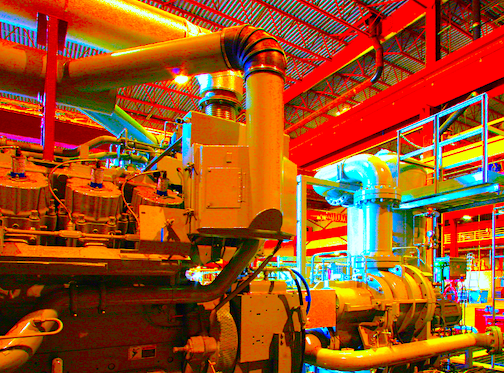Industrial workplaces, for the most part, are reasonably well-lit areas with lighting that allows unhindered movement throughout open plant-floor spaces. In closed-room environments, fixed ceiling lighting originally specified and installed by the building contractor is usually adequate to light up the area. However, when it comes to close-up task lighting, most plants defer to the OEM lighting provided on the machine. Such task lighting, if provided, may or may not be adequate for the operator’s requirements. Rarely, though, is it designed for, or in most cases, adequate for machine-maintenance requirements.
According to the American Optometric Association (AOA), adults between 41- and 60-years-old will experience a number of age-related vision changes. The first on a list of major changes is the “need for more light.” In addition, due to discoloration of the lens inside the eye, many individuals will also experience a change in their color perception.
To combat those changes, the AOA recommends use of brighter lights in work areas where close-up tasks are performed. Interestingly, a large segment of North America’s maintenance-tradesperson demographic happens to fall in the 41+ age bracket.
When carrying out any maintenance task on or at the equipment location or maintenance- department workbench, high-illumination lighting is critical for efficient performance and, more important, safety. Maintainers require contrasting light and shadow for depth perception when working at arm’s length on a component or piece of equipment. Bright light illuminates and facilitates identification of machine-part numbers and calibration marks, and highlights any heat discoloration, wear patterns, and residual debris.
All of this is crucial when it comes to a visual mechanical-maintenance investigation or repair of fixed or moving parts. One only need ask an electrician if he or she would rather work on a live panel with high-illumination lighting, or with dim or no lighting.
In most maintenance departments, lighting maintenance is usually a “replace when no longer working” work-order task. Alas, such work orders rarely identify the correct wattage, Kelvin color temperature, or Color Rendering Index (CRI) for operator- or maintenance-task lighting.
For maintenance tasks where ultra-bright light is needed, a planner should be specifying lighting solutions that provide between 70-80 lumens per ft2, with a kelvin color temperature in the 5000 to 7000 kelvin range, and a CRI rating of 90 to 100. These specifications will deliver the brightest working environment with the most accurate color representation.
If this approach isn’t already a standard operating procedure in your facility, perhaps it’s time to perform a plant operations and maintenance lighting assessment. Meanwhile, just cleaning lamping and reflector surfaces can significantly increase your lighting effect.
Unfortunately, lighting is often a forgotten item and rarely identified as a requisite tool on a work-order tool list. Portable lighting should be sourced correctly with the same lumen, Kelvin and CRI rating as fixed task lighting. In the meantime, you may want to consider purchasing $20 expandable “selfie” sticks with folding tripod bases that, in a pinch, allow maintainers to use their cellphone LED lights (and cameras) to shed light on their work.TRR
ABOUT THE AUTHOR
Ken Bannister has 40+ years of experience in the RAM industry. For the past 30, he’s been a Managing Partner and Principal Asset Management Consultant with Engtech industries Inc., where he has specialized in helping clients implement best-practice asset-management programs worldwide. A founding member and past director of the Plant Engineering and Maintenance Association of Canada, he is the author of several books, including three on lubrication, one on predictive maintenance, and one on energy reduction strategies, and is currently writing one on planning and scheduling. Contact him directly at 519-469-9173 or kbannister@theramreview.com.
Tags: reliability, availability, maintenance, RAM, lighting, maintenance management, planning and scheduling, work orders



